Attractions In Williamsburg Virginia
One of America's best-known living history towns, Colonial Williamsburg is not a reproduction or a group of buildings collected from other sites. This was the capital of the colony (and later the state) of Virginia from 1705 until 1779, and today re-creates those times in their original locale, often in the original buildings. Others are meticulously rebuilt or restored on their original sites. But Williamsburg is not just for history buffs, nor is it all about the Revolution. Its tourist attractions include two outstanding museums of art, a major theme park, and a water park. Even if you don't go to Williamsburg for its history, you'll enjoy walking through the restored area, where you'll meet people dressed in 18th-century clothing and engaged in the everyday life of more than two centuries ago.
1 Colonial Williamsburg: Revolutionary City

In the setting of more than 100 original and reconstructed buildings from the 1700s, costumed interpreters recreate the excitement of the era just before and during the American Revolution in a prosperous colonial capital. Along with the everyday life of artisans, shopkeepers, and residents are daily reenactments of militia drills, trials, political meetings, and other activities, many of which are outdoors. Others are in the handsome Capitol Building, which for 80 years was the political center of Virginia, one of England's largest and wealthiest colonies.
Candlelight tours, carriage rides, and tours following special interests such as gardens (there are more than 100 of these in Colonial Williamsburg) are also offered. Be sure to check the daily schedule to find those activities and tours that interest you, as some are not repeated frequently. While you can stroll down Duke of Gloucester Street through the center of the restored area, eat in the taverns, and visit the shops, you cannot enter any of the historic buildings or gardens without a ticket, and even the street may be restricted to ticket-holders for any of the many costumed parades and reenactments. While tickets are expensive, they give you access to a tremendous number of attractions and activities that would be a shame to miss.
2 Governor's Palace

The original home of the Royal Governor was completed in 1722 but it burned to its foundations and was replaced with a replica in 1934. The Governor's Palace was the social center of Williamsburg, scene of gala dinners and balls, and it was built to impress the locals with Royal authority. After the Revolution, it was home to the first two governors of Virginia. Inside, along with its beautifully appointed rooms, you'll see a display of period firearms and swords. Outside, explore the terraced formal gardens, which include a hedge maze, and a peek into the kitchen and scullery allows you to watch period foods being prepared.
3 George Wythe House
The finest private home in Williamsburg, the George Wythe House was built for a prominent attorney in the mid-18th century. Today, it's decorated and furnished in period pieces, so you can see what life would have been like in 1700s Williamsburg. George Wythe was among the most enlightened and influential men of the Revolutionary era, a mentor to Thomas Jefferson and other Virginia patriots and leaders. He was a delegate to the Continental Congress, and signer of the Declaration of Independence. But the distinguished history of the house doesn't end there. It was General George Washington's headquarters before the British siege of Yorktown, and headquarters of the French General Rochambeau after the victory at Yorktown. In 1776, Thomas Jefferson and his family stayed here while he was delegate to the Virginia General Assembly. Along with the house are outbuildings that include a kitchen, smokehouse, dovecote, and stable, as well as lovely formal gardens.
4 Artisans' Shops
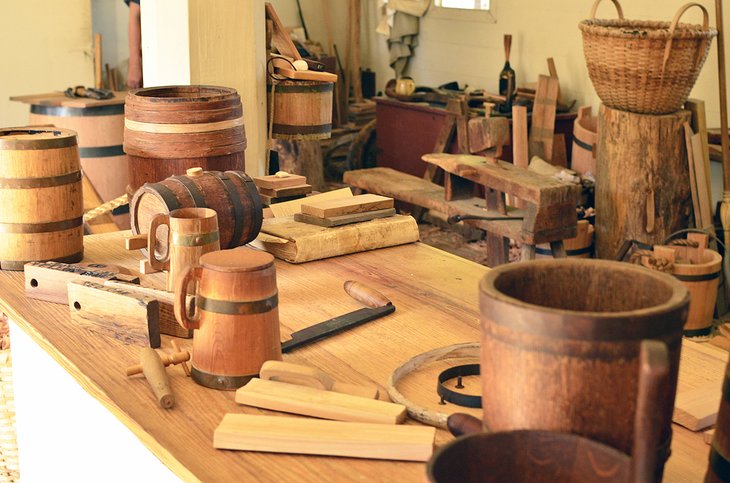
Some of the most fascinating places to visit in Williamsburg are the many artisans' shops where costumed craftspeople practice and demonstrate the skills that were necessary in any prosperous 18th-century city. Step into these to see authentic tools, clothing, and utensils being handcrafted and to talk with the craftspeople. Among the most interesting are the Blacksmith Shop, the Geddy Foundry and silversmith shop, the Harness & Saddlemaker Shop, the Bootmaker, the Gunsmith Shop, the Wheelwright, and the Cabinetmaker Shop. You can watch fashionable hats created at the Milliner's Shop; see wigs made from human, goat, and horse hair at the Wigmaker's Shop; and watch the cooper as he works on casks and pails at his shop in the Ludwell-Paradise Stable. At the Apothecary, you'll learn how apothecaries functioned as doctors at that time, treating patients and performing surgery.
5 Busch Gardens
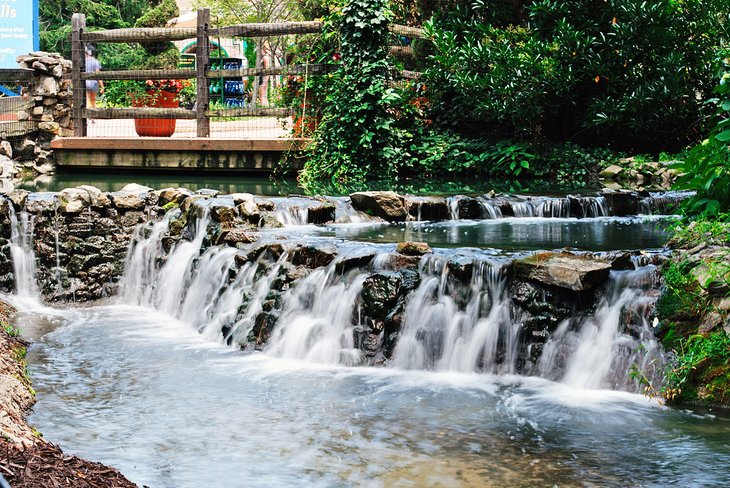
Whether you're a parent, a thrill-seeker or you just like a day of carefree fun, there's something for you at this lively combo of adventure park, zoo, playground, and entertainment stage. You can meet the Muppets, cruise the "Rhine," clap to Bavarian oompah bands, ride in a teacup, or hop aboard the historic Loch Ness Monster roller coaster. Rides have German and other European themes - a water ride through Pompeii's ruins, the Verbolten, and the hair-raising 195-foot Alpengeist, one of the world's tallest and fastest coasters with inversions at speeds up to 67 miles per hour. Less adrenaline inclined visitors can watch Border Collies herd sheep at the Highland Stables, meet Clydesdales, interact with colorful exotic birds at a free-flight aviary, and learn about wolves and other predators in Wolf Haven. Little kids will love Land of the Dragons and Sesame Street Forest of Fun.
Address: One Busch Gardens Boulevard, Williamsburg
6 Brush-Everard House
One of Williamsburg's oldest houses is restored to its 1773 state and authentically furnished to illustrate the life of Thomas Everard, an apprentice who rose to become a planter and community leader. The home is especially known for its beautifully crafted staircase with carved stair brackets and turned balustrades. You can also see the original kitchen and smokehouse.
7 DeWitt Wallace Decorative Arts Gallery and Abby Aldrich Rockefeller Folk Art Museum
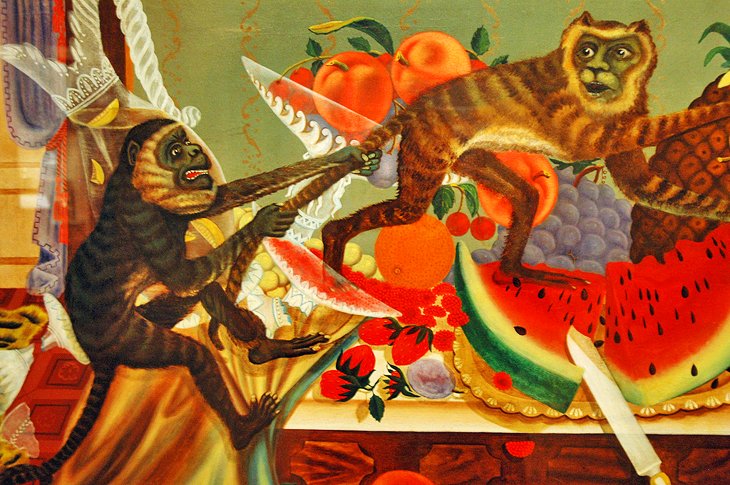
DeWitt Wallace Decorative Arts Gallery and Abby Aldrich Rockefeller Folk Art Museum Desiree Williams
Two outstanding art museums share a building that, while connected to Colonial Williamsburg, is not part of the Revolutionary City historic area. The DeWitt Wallace Decorative Arts Gallery displays American and British decorative arts from the 17th through 19th centuries. Specialties are the world's largest collection of furniture made in the American south, one of the largest collections of English porcelain outside of Britain, and a major collection of English silver.
The Abby Aldrich Rockefeller Folk Art Museum contains one of the most complete collections of American folk art, which includes sculptures, paintings, toys, woodcarvings, needlework, quilts, and decorative items created by untrained artists. The fresh designs, vibrant colors, and creative ideas expressed in these works show an exuberance and spontaneity that makes them especially appealing. The combined museums require a separate ticket from the Revolutionary City sights.
Address: 325 Francis Street, Williamsburg
8 Colonial Taverns
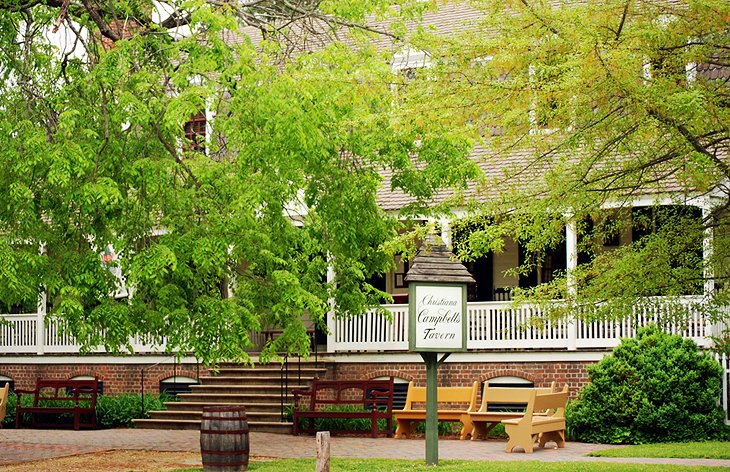
In colonial Virginia, taverns were where local people and travelers gathered for news, food, and sociability. Some of those in Williamsburg are still active dining places where you can get a feel for 18th-century social life and taste authentic dishes that Jefferson or Washington might have enjoyed here. Raleigh Tavern was a social hot spot favored by members of the House of Burgesses, and equally popular was Wetherburn's Tavern, right across the street. Balls and banquets were held at both taverns, and during restoration, nearly 200,000 artifacts were found on the site of Wetherburn's.
King's Arms Tavern opened in 1722 and catered to the gentry with the finest furnishings and service. Today, it continues that standard as the premier dining room in the historic area, with 18th-century musical entertainment. Much more informal is Chowning's Tavern, which first opened in 1766 catering to a less lofty clientele. Today, the restaurant retains this spirit, serving traditional English fare, and featuring evening Gambols, with colonial games and music. George Washington's favorite was Christiana Campbell's Tavern, and you can still enjoy Christiana's crab cakes there as he did. Shields Tavern serves a varied home-style menu in a casual atmosphere.
9 Great Hopes Plantation
The restored houses along Duke of Gloucester Street were homes of the wealthiest leaders, but that's not the way most 18th-century residents of Williamsburg lived. Most lived and worked on small plantations owned by farmers who were not men of wealth. They lived in small houses or cabins; many were slaves. Great Hopes Plantation is a newer addition designed to represent the lifestyle on one of these small family farms. Along with replicas of their buildings, you can see rare breeds of farm animals they would have known, visit their gardens, and see demonstrations of how they cooked. Interpreters are busy at the tasks of everyday life - planting, caring for animals, making implements, cooking, and domestic tasks - and are happy to discuss the lives of small farmers and their work.
10 College of William and Mary

The College of William and Mary was founded in 1693, and is the second oldest college in the United States, behind Harvard. George Washington, Thomas Jefferson, James Monroe, and John Tyler all took courses here. The Wren Building is the oldest active educational building in the United States, originally built in 1695, and reconstructed in 1732 after a fire. The first floor of the Wren Building is open, and student-led campus tours are filled with history and stories about the college. You can see the building where British General Cornwallis stayed and attend free organ concerts in the chapel. The Muscarelle Museum of Art stages visiting exhibitions, and throughout the campus are pieces of sculpture.
11 Bassett Hall
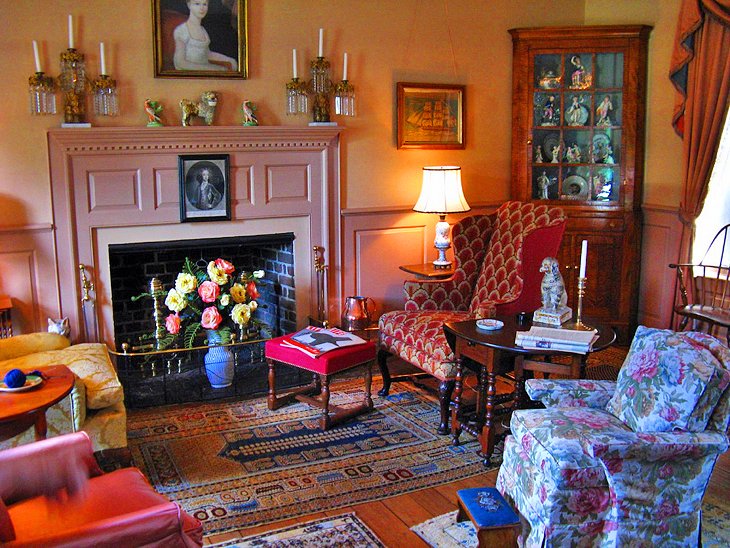
The 18th-century home of John D. Rockefeller Jr and Abby Aldrich Rockefeller was built by a member of the Virginia House of Burgesses. The house has been restored to its appearance in the 1930s and '40s. A 15-minute film sets the background and a visit to the Rockefellers' home gives a perspective on the family that made Colonial Williamsburg possible. Be sure to visit the extensive flower gardens.
12 Water Country USA
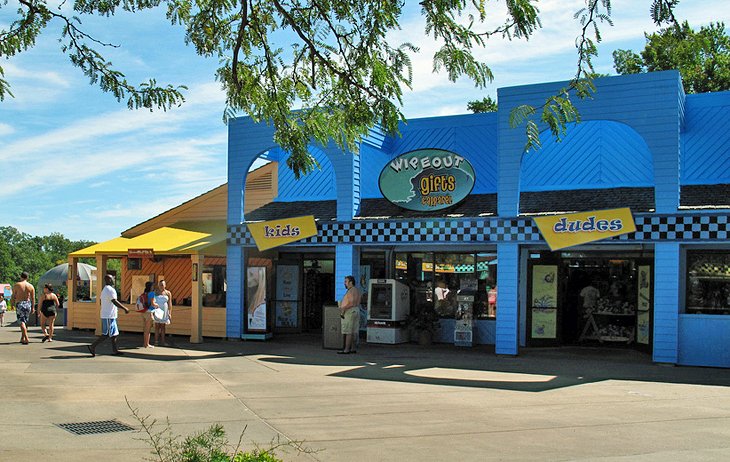
When children tire of restored colonial homes and antiques, and the summer afternoon heat is getting to the adults, everyone will enjoy a visit to nearby Water Country, a water park with pirate-themed rides and miniature golf replete with water hazards. Visitors can ride on the Hubba Hubba Highway, not quite the placid river it appears to be, and get wet on one of the waterslides or in the wave pool.
Address: 176 Water Country Pkwy, Williamsburg
Day Trips from Williamsburg
Berkeley Plantation
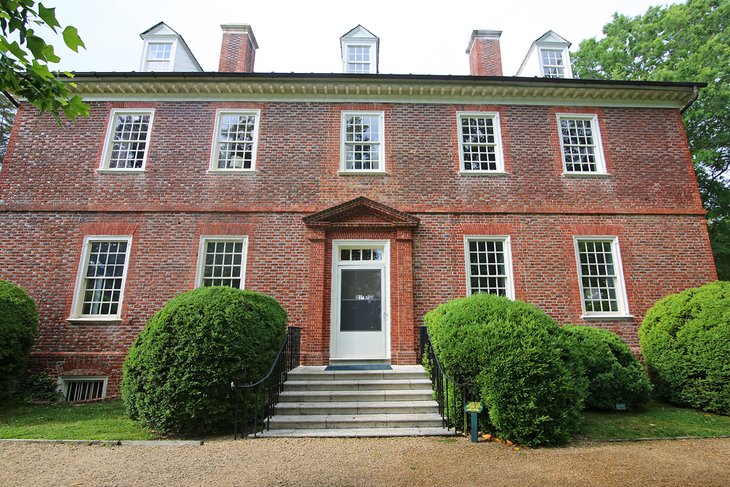
The most historic of all the plantations along the James River, Berkeley has earned its National Historic Landmark status several times over. The first Thanksgiving was celebrated here in 1619, and Taps was composed here in 1862 when it served as the headquarters of Union General McClellan during the Civil War. It was the birthplace of President William Henry Harrison. But today's tourist will remember it most for its beautiful Georgian architecture and for the rooms furnished with priceless antiques. Be sure to visit the restored gardens in boxwood-hedged terraces overlooking the James River.
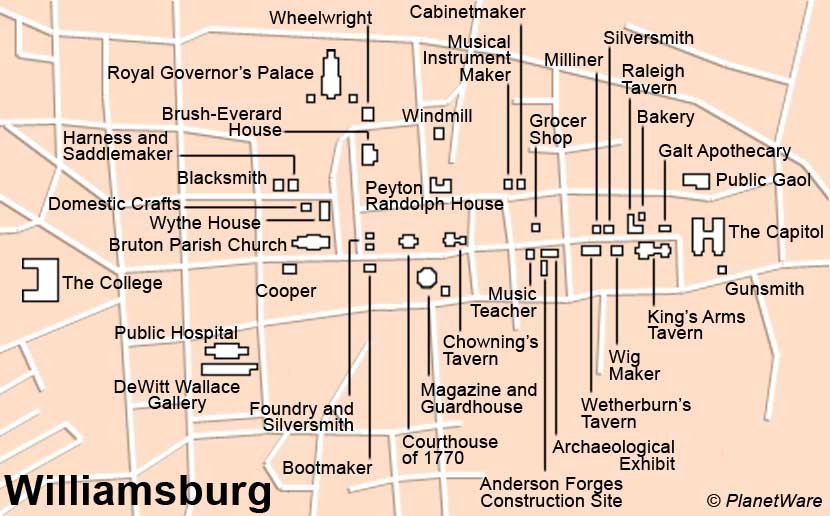
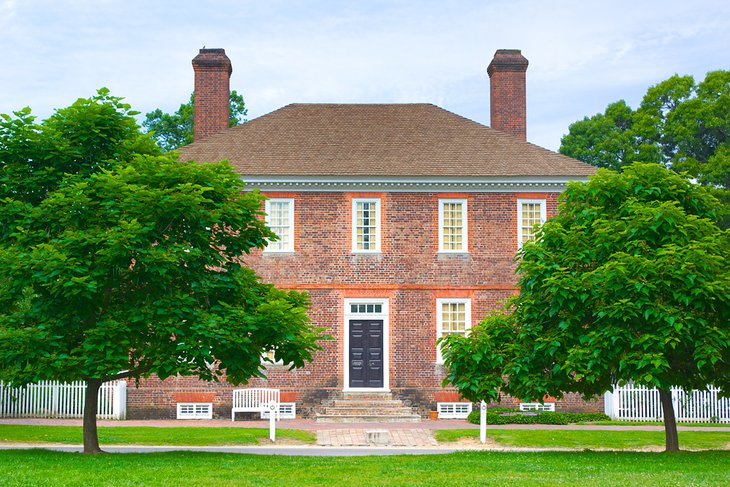
Comments
Post a Comment